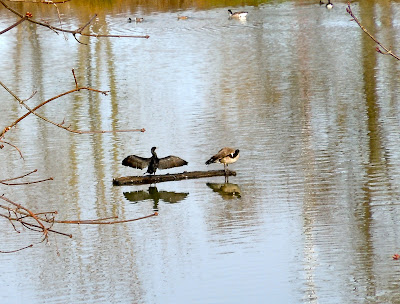The weather in the Northwest turned warmer and drier than usual so another trip to the mountains to see how the snow looked was called for. A comparison of the state of the Salt Creek Falls looked interesting. Snowshoes were still de rigueur but the snow base had dropped markedly. The melt is well under way with the snow surface having an icy cap and untrod areas make for easier walking.
The falls are now clear of ice and are spectacular in full flow. Strangely, when looking at the falls from the top, the near three hundred foot drop doesn’t look as awe inspiring as I was expecting.
Lookdown the valley and the full drop can be appreciated as you watch the raging water rush down the serpentine, steep and narrow canyon. The lack of snow is clear in this view with just a few patches remaining.
A sidetrack on the return takes us towards Diamond Creek Falls, which is named for John Diamond of Coburg, who also gave his name to Diamond peak. Unfortunately there are no diamonds in the creek save for the ephemeral ones due to sunlight refracting through water droplets.
The bridge over the creek leading to Salt Creek Falls still has a thick carpet of snow although the edges are melting. Whilst organizing my camera, the fellow member of the expedition dropped my hiking pole into the water. We had to rush to catch up with it as the cork handhold bobbed along in the turbulent water until it reached a bend where the torrent quieted and the pole hit a snag. A few minutes of excitement over the icy water and it was returned to it proper place. Around the next bend and it would have been over the falls. Retrieving it from the canyon at the bottom would have been a tad tedious.


















